Check out the universe's monsters that are coming to get you.
There are things out there in the vast universe that are potentially life threatening.
The malignant universe is full of objects that could destroy not only civilisation but the entire solar system.
Earth is a small little world when compared to the entire universe and wiping it off the face of space isn't as difficult as you think.
With objects like black holes and neutron stars wandering close by, and by close we mean in cosmic terms - light years, it isn't not hard to believe that our home planet could be under potential danger.
Let's take a look at some of the scary cosmic monsters that are lurking around us:
- Rogue black holes
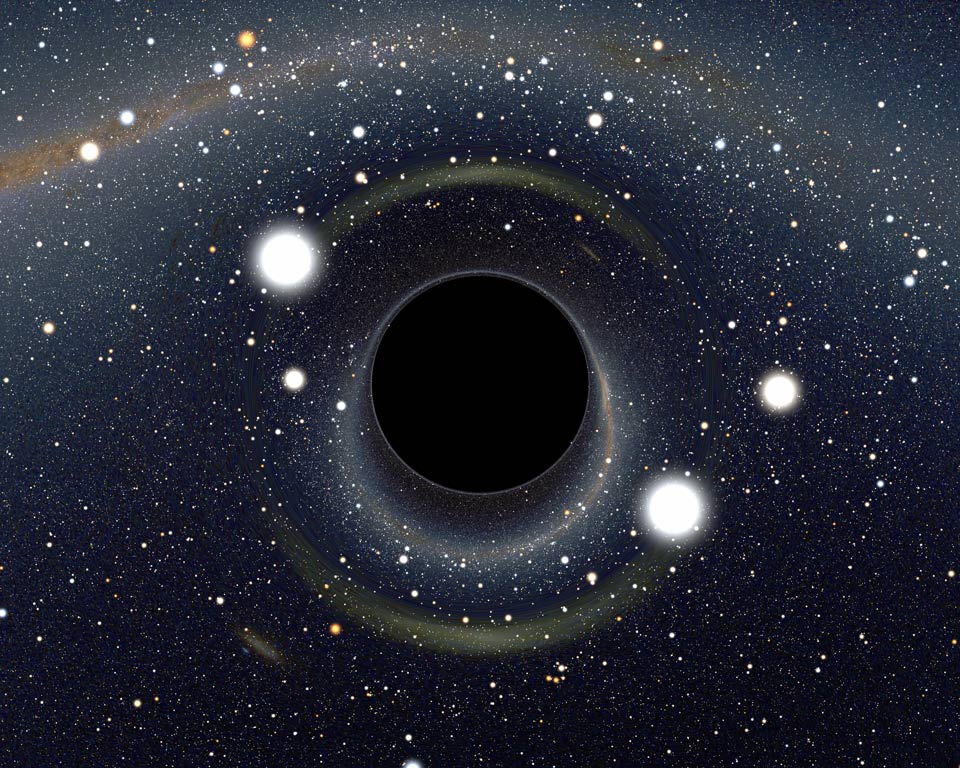
For those of you who don’t know, black holes are colossal cosmic beasts and once you're in one, there's no coming back. Their gravitational pull is so strong that anything that gets pulled in (beyond the event horizon) it can't escape, not even light. And because of the light sucking void they are not at all easy to spot in the vast darkness of space and may be hundreds around our galaxy.
Rogue black holes, around 600 million times the mass of the sun, are the ones that got kicked away when galaxies collide and are sent swirling into space at 9.5 million kph. So basically, you can’t see them, they’re massive, they’re fast and they’re coming to get you.
If a rogue black hole is hurling towards Earth, it most certainly tear the solar system apart and slurp everything into its dark mysterious hole. What happens in there is still a puzzle for scientists, but their best guess is being shred to pieces.
- Galactic cannibalism
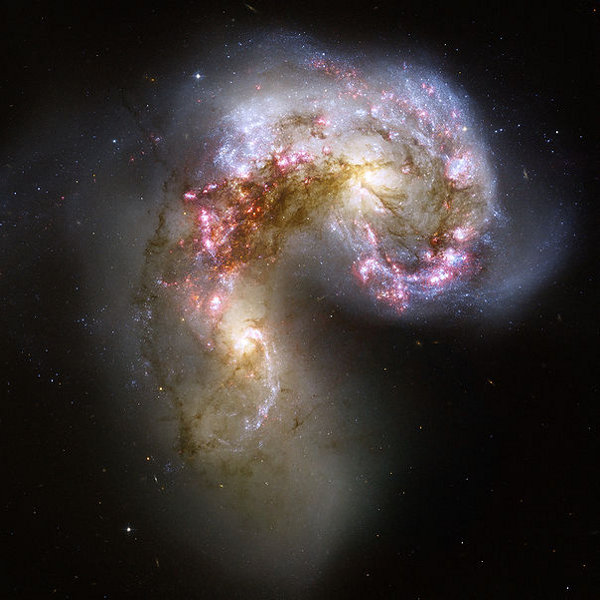
If you’re thinking about enormous galactic objects eating each other up, you're on the right path.Galactic cannibalism is when two galaxies ‘merge’ with each other in a gigantic cosmic collision. This may seem exciting, but the bigger galaxy's gravitational pull would consume the smaller galaxy. Earth would most likely be thrown into the outskirts or be fried up by things like hypervelocity stars, huge stars that move at 1.6 million kilometres an hour.
And just so you know, our Milky Way galaxy is on the course to collision with our neighbour galaxy Andromeda which is by the way a lot bigger. That’s right, in a couple billion years, we will be eaten.
- Our Sun
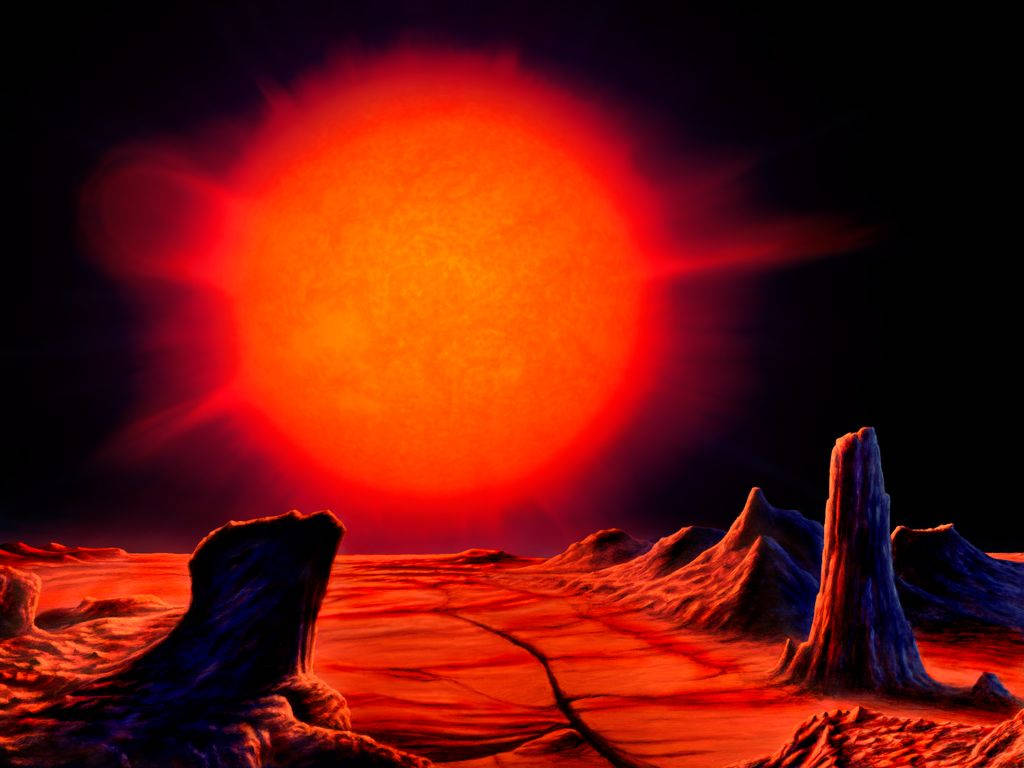
Here’s where you would want to bring up the question of friend or foe. The sun though providing us with heat and light and proving to be one the essential things for life has a dark side. First off, solar storms. Solar storms are radiation and streams of charged particles from the sun erupting surface. It wouldn't actually be a threat to human life, but it could potentially disturb our technologies like the one that hit in 1859 called the Carrington event.
And once the sun's ‘teenage’ years are over the sun will swell up into a big red star called a red giant which probably will swallow the Earth. Although we still have around 4 billion years before we have to worry about that, but it's going to happen.
- Gamma ray bursts
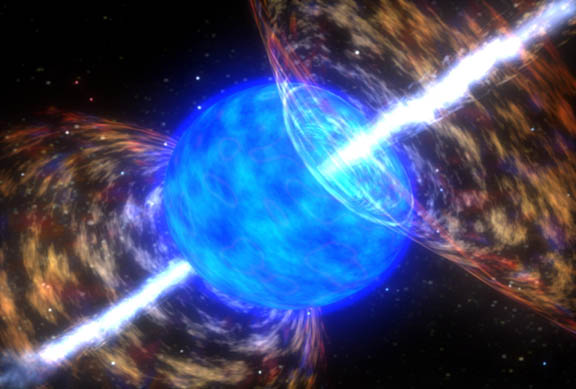
Gamma Ray Bursts (GRB) are one of the most powerful events in space which happen with the collapsing of a super massive star or collision of two black holes or neutron stars that are so bright we can see them for billions of light-years away.
You wouldn't want to be in its path when it goes off though. If Earth turns out to be in the 'beam path' (direction where the rays would head out) it would blast our planet with huge lethal levels of radiation and stripping away the atmosphere which would eventually lead to mass extinction. Yikes!
- A Magnetar
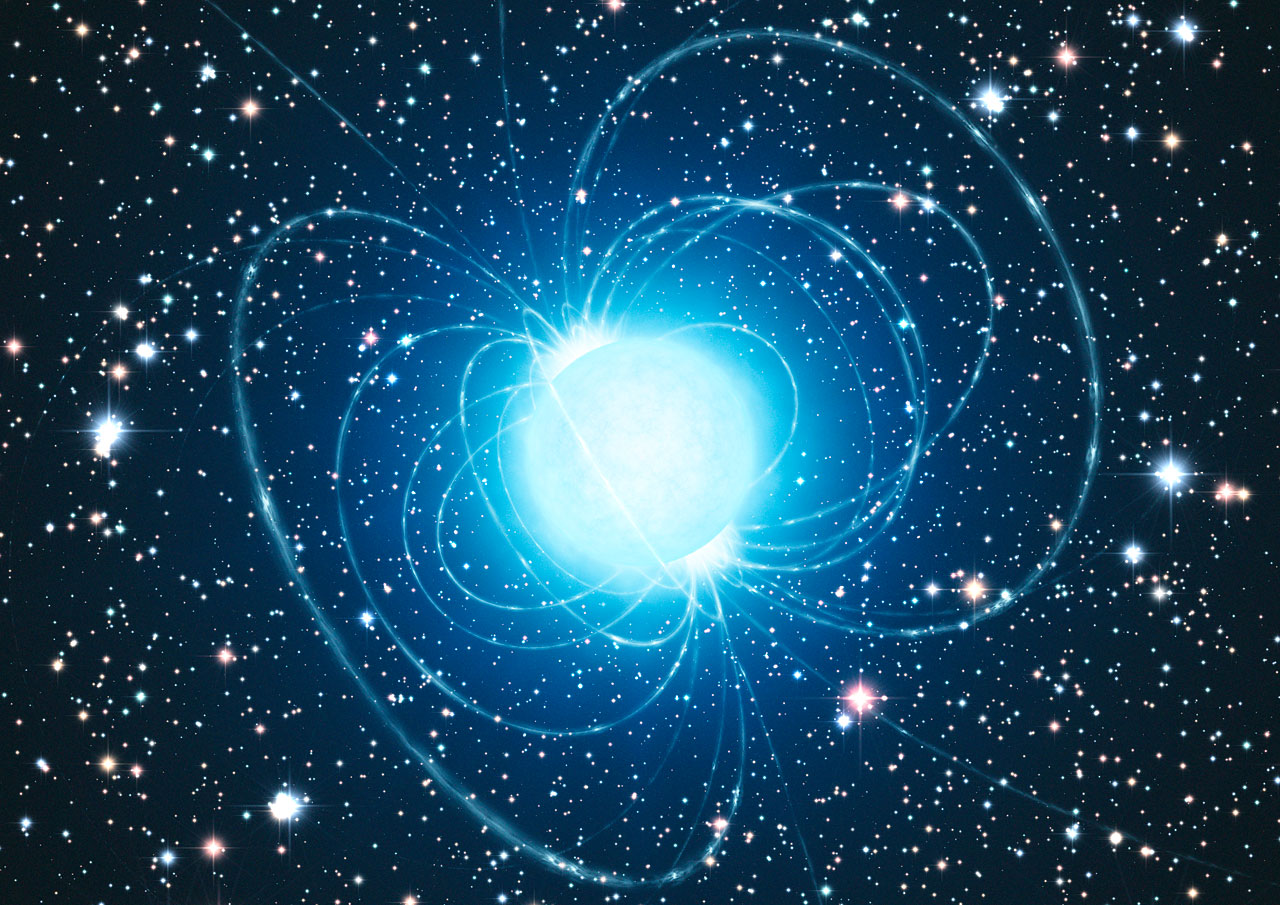
A neutron star is an insanely dense star with all its mass crunched up into an area of about 15km, which means it's pretty darn heavy. Basically, teaspoon of neutron star material would weigh about 10 million tons.
A magnetar is a type of neutron star with an extremely powerful magnetic field. If it gets too close, the magnetic fields are strong enough to disturb your molecular structure which means you would in a way, dissolve.
Two of them, though quite far, hit Earth without notice in the past. In 1979, the solar system was hit by the radiation of a magnetar that inundated the detectors of three U.S. Department of Defense Vela satellites, the Soviet Prognoz 7 satellite, and the Einstein Observatory and another in 2004 which penetrated deep into the ionosphere.
These high-velocity magnetars aren't even that rare!
But you don't need to start panicking just yet. The chances of any of these events happening are very slim or really far in the future.
![submenu-img]() Vikas Divyakirti, owner of Drishti IAS, finally breaks silence on 3 UPSC aspirants' deaths, says, 'We did not want...'
Vikas Divyakirti, owner of Drishti IAS, finally breaks silence on 3 UPSC aspirants' deaths, says, 'We did not want...'![submenu-img]() ITR 2024: Will the deadline for filing income tax return be extended beyond July 31? Government says…
ITR 2024: Will the deadline for filing income tax return be extended beyond July 31? Government says…![submenu-img]() Meet woman, wife of IPS officer, she cracked UPSC exam in first attempt with AIR...
Meet woman, wife of IPS officer, she cracked UPSC exam in first attempt with AIR...![submenu-img]() Amid gain in Suzlon Energy's shares, NSE issues warning to company for...
Amid gain in Suzlon Energy's shares, NSE issues warning to company for...![submenu-img]() 'Leave me alone': Selena Gomez slams trolls amid plastic surgery rumours
'Leave me alone': Selena Gomez slams trolls amid plastic surgery rumours![submenu-img]() Meet Tanu Jain, whose IAS coaching center Tathastu wasn't sealed amid death of 3 UPSC aspirants
Meet Tanu Jain, whose IAS coaching center Tathastu wasn't sealed amid death of 3 UPSC aspirants![submenu-img]() NEET UG 2024 counselling to start from August 14, registrations likely to begin in..
NEET UG 2024 counselling to start from August 14, registrations likely to begin in..![submenu-img]() Meet IIT graduate, daughter of sugar mill worker who lost mother during UPSC preparation, then became IAS with AIR...
Meet IIT graduate, daughter of sugar mill worker who lost mother during UPSC preparation, then became IAS with AIR...![submenu-img]() ICAI CA Foundation Result 2024 declared; check direct link to download scorecard
ICAI CA Foundation Result 2024 declared; check direct link to download scorecard![submenu-img]() Meet woman, who returned from London, cracked UPSC exam thrice, became IES, IRS, IAS officer, she is collector of...
Meet woman, who returned from London, cracked UPSC exam thrice, became IES, IRS, IAS officer, she is collector of...![submenu-img]() Another BMW Hit And Run Case In Mumbai, 28 Year-Old Dies In Hospital
Another BMW Hit And Run Case In Mumbai, 28 Year-Old Dies In Hospital![submenu-img]() Delhi Coaching Center Flood: Preliminary Investigation Reveals Norms Were Ignored By The Centre
Delhi Coaching Center Flood: Preliminary Investigation Reveals Norms Were Ignored By The Centre![submenu-img]() Delhi Coaching Center Flood: 5 Including Owner of Basement Arrested By Police | IAS Coaching Tragedy
Delhi Coaching Center Flood: 5 Including Owner of Basement Arrested By Police | IAS Coaching Tragedy![submenu-img]() India Vs Sri Lanka Highlights: Ravi Bishnoi, Hardik Pandya Help IND Beat SL By 8 Wickets
India Vs Sri Lanka Highlights: Ravi Bishnoi, Hardik Pandya Help IND Beat SL By 8 Wickets![submenu-img]() Paris Olympics 2024: Indian Boxer Nikhat Zareen Enters Pre-Quarterfinals In Women's 50 KG Category
Paris Olympics 2024: Indian Boxer Nikhat Zareen Enters Pre-Quarterfinals In Women's 50 KG Category![submenu-img]() Who is shooter Manu Bhaker, only Indian to win 2 medals in single Olympic Games?
Who is shooter Manu Bhaker, only Indian to win 2 medals in single Olympic Games?![submenu-img]() Rohan Bopanna announces retirement from tennis, says, 'I have...'
Rohan Bopanna announces retirement from tennis, says, 'I have...'![submenu-img]() IND vs ARG, Paris Olympics 2024: Harmanpreet Singh’s last-minute equaliser help India to secure draw against Argentina
IND vs ARG, Paris Olympics 2024: Harmanpreet Singh’s last-minute equaliser help India to secure draw against Argentina![submenu-img]() 'Shooting for stars': Anushka, Deepika, Alia celebrate as Manu Bhaker wins India’s first medal at Paris Olympics 2024
'Shooting for stars': Anushka, Deepika, Alia celebrate as Manu Bhaker wins India’s first medal at Paris Olympics 2024![submenu-img]() Paris Olympics 2024: Who is Barbara Butch, slammed for 'mocking Jesus' at opening ceremony?
Paris Olympics 2024: Who is Barbara Butch, slammed for 'mocking Jesus' at opening ceremony?![submenu-img]() Meet Sanjay Dutt's best friend Paresh Ghelani, played by Vicky Kaushal in Sanju, works with Ratan Tata for...
Meet Sanjay Dutt's best friend Paresh Ghelani, played by Vicky Kaushal in Sanju, works with Ratan Tata for...![submenu-img]() Step inside Vicky Kaushal's luxurious house with perfect view of Mumbai sunsets
Step inside Vicky Kaushal's luxurious house with perfect view of Mumbai sunsets![submenu-img]() In pics: Step inside Mahesh Babu's Rs 28 crore home in Hyderabad with swimming pool, gym, princess bedroom for Sitara
In pics: Step inside Mahesh Babu's Rs 28 crore home in Hyderabad with swimming pool, gym, princess bedroom for Sitara ![submenu-img]() How much Paris Olympic gold medal costs, what is it made of?
How much Paris Olympic gold medal costs, what is it made of?![submenu-img]() 7 hidden spots rich in history from Raichur
7 hidden spots rich in history from Raichur![submenu-img]() Vikas Divyakirti, owner of Drishti IAS, finally breaks silence on 3 UPSC aspirants' deaths, says, 'We did not want...'
Vikas Divyakirti, owner of Drishti IAS, finally breaks silence on 3 UPSC aspirants' deaths, says, 'We did not want...'![submenu-img]() ITR 2024: Will the deadline for filing income tax return be extended beyond July 31? Government says…
ITR 2024: Will the deadline for filing income tax return be extended beyond July 31? Government says…![submenu-img]() Wayanad landslides live update: Death toll rises to 84, over 115 injured
Wayanad landslides live update: Death toll rises to 84, over 115 injured![submenu-img]() Is India rethinking issue of allowing Chinese investment? Union Minister Piyush Goyal makes big statement
Is India rethinking issue of allowing Chinese investment? Union Minister Piyush Goyal makes big statement![submenu-img]() Where are Vikas Divyakirti, Avadh Ojha amid Rau IAS tragedy? UPSC aspirants question star gurus' silence
Where are Vikas Divyakirti, Avadh Ojha amid Rau IAS tragedy? UPSC aspirants question star gurus' silence![submenu-img]() Voter Sentiment: Harris outshines Biden among young and non-white voters
Voter Sentiment: Harris outshines Biden among young and non-white voters![submenu-img]() Beyond the Headlines: India, Pakistan and the hidden agenda of chaotic US poll
Beyond the Headlines: India, Pakistan and the hidden agenda of chaotic US poll![submenu-img]() DRDO fortifies India's skies: Phase II ballistic missile defence trial successful
DRDO fortifies India's skies: Phase II ballistic missile defence trial successful![submenu-img]() Gaza Conflict Spurs Unlikely Partners: Hamas, Fatah factions sign truce in Beijing
Gaza Conflict Spurs Unlikely Partners: Hamas, Fatah factions sign truce in Beijing![submenu-img]() Crackdowns and Crisis of Legitimacy: What lies beyond Bangladesh's apex court scaling down job quotas
Crackdowns and Crisis of Legitimacy: What lies beyond Bangladesh's apex court scaling down job quotas![submenu-img]() 'Leave me alone': Selena Gomez slams trolls amid plastic surgery rumours
'Leave me alone': Selena Gomez slams trolls amid plastic surgery rumours![submenu-img]() Freedom At Midnight teaser: Historical drama shows how Mahatma Gandhi sidelined Sardar Patel, made Nehru India's PM
Freedom At Midnight teaser: Historical drama shows how Mahatma Gandhi sidelined Sardar Patel, made Nehru India's PM![submenu-img]() Taapsee Pannu reacts to fight with paparazzi: ‘Appeasing them won’t get me…'
Taapsee Pannu reacts to fight with paparazzi: ‘Appeasing them won’t get me…'![submenu-img]() Shah Rukh Khan rushes to US after treatment goes wrong in Mumbai: Report
Shah Rukh Khan rushes to US after treatment goes wrong in Mumbai: Report![submenu-img]() 'Kitna paisa hai bey?': Kushal Tandon bashes Asim Riaz after he says 'I have so much money' on Khatron Ke Khiladi 14
'Kitna paisa hai bey?': Kushal Tandon bashes Asim Riaz after he says 'I have so much money' on Khatron Ke Khiladi 14![submenu-img]() Meet Goan sisters, who impressed Mukesh Ambani, Nita Ambani at Anant Ambani-Radhika Merchant wedding with...
Meet Goan sisters, who impressed Mukesh Ambani, Nita Ambani at Anant Ambani-Radhika Merchant wedding with...![submenu-img]() This Mughal princess was richest but never married, spent Rs 15 lakh on her brother's wedding, annual salary was Rs...
This Mughal princess was richest but never married, spent Rs 15 lakh on her brother's wedding, annual salary was Rs...![submenu-img]() This is world’s most expensive thing ever made by humans, its whopping cost is…
This is world’s most expensive thing ever made by humans, its whopping cost is…![submenu-img]() 11 times costlier than Mukesh Ambani, Nita Ambani's Rs 15000 crore Antilia: This diamond was found in India in...
11 times costlier than Mukesh Ambani, Nita Ambani's Rs 15000 crore Antilia: This diamond was found in India in...![submenu-img]() Meet woman, an Indian, who lives in world’s largest house, larger than Mukesh Ambani, Nita Ambani’s Antilia, she is...
Meet woman, an Indian, who lives in world’s largest house, larger than Mukesh Ambani, Nita Ambani’s Antilia, she is...












































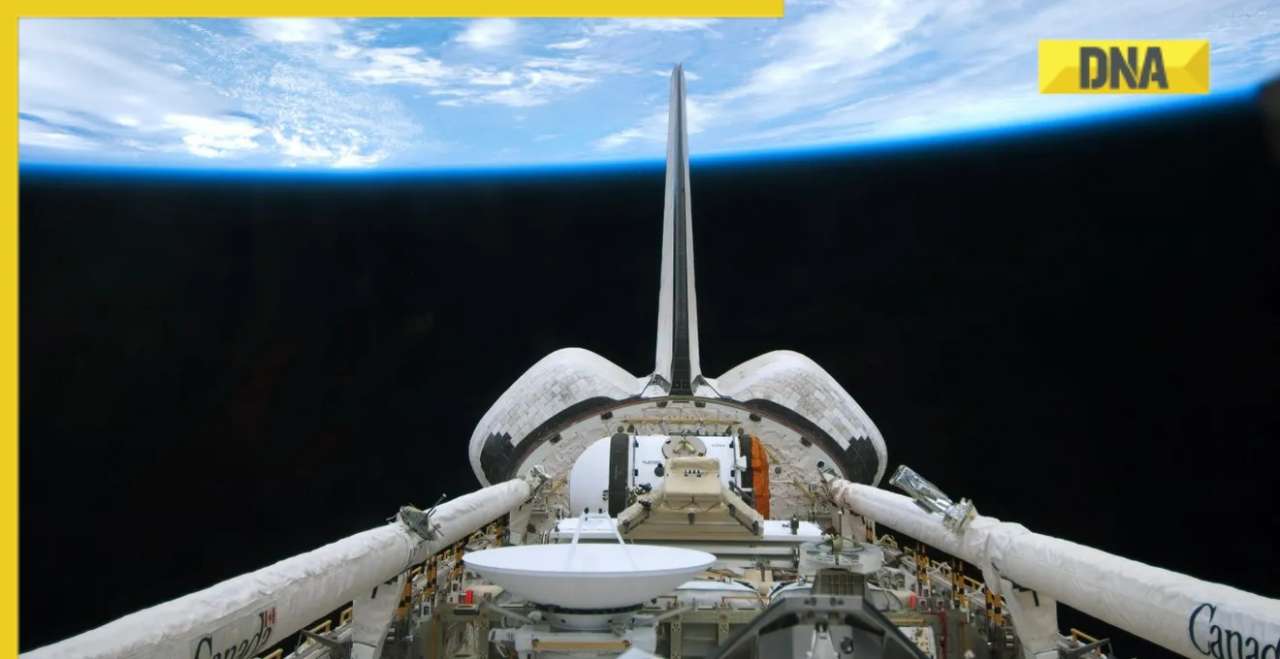



)
)
)
)
)
)
)
)
)
)
)
)
)
)
)









)
)
)
)
)
)